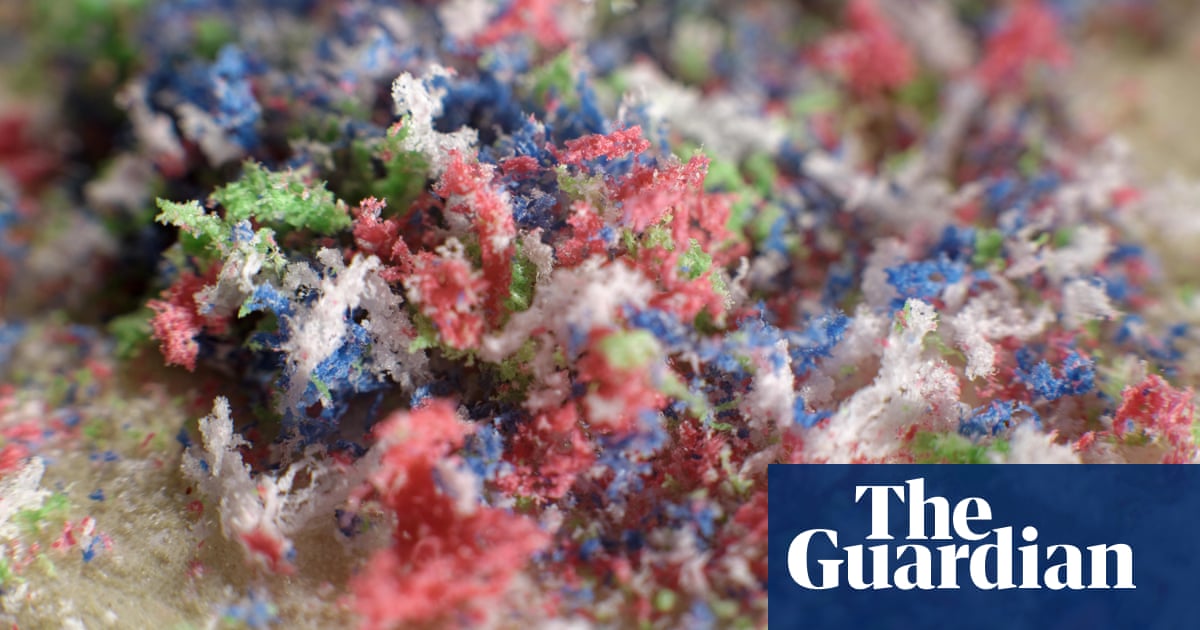Oh boy! I wonder which form of environmental collapse will cause my death!
Don’t worry, you don’t need to pick, it’ll be a combination of all of them, but it will be unattributable to any one of them!
The two biggest sources of microplastics are car tires and clothing. If you care about reducing microplastics, you should try to not buy plastic clothing (polyester, nylon, etc.) and instead buy biodegrable fibers like cotton or wool. I don’t know what to do about the tire thing except drive maybe drive less?
Not a personal solution but trains don’t have tires, and busses probably consume less tires per person per km.
trains don’t have tires
Oh?

And the noise, oh my fucking god, the noise!! My phone can measure accurately to 90dB and this thing hits 90 regularly.
If clothes are a very significant contributor, I’d like to see mandatory lint filters in new washing machines.
The snag is that the ‘micro’ in ‘microplastics’ means they’re too small to reasonably or reliably capture without great expense - even at the industrial scales of sewage treatment plants.
See I thought about this and this is what I figured at first, but then it occurred to me that lint isn’t actually microscopic. Some of it probably is, but I bet that the normal, trappable size lint escapes into the lakes via the sewage system and then degrades into microscopic plastics. Could be wrong but if this is true then filtering at the washer, using a mesh similar to the one for the dryer could be a significant help. If the numbers work of course.
Though where do you put the lint once filtered out? (Assuming most is filterable)
In your drinking water to make the process more efficient of course.
Fuck.
I think there is already a product that that will filter plastics out of the water out line on washing machine actually
Quite possibly. I think I recall something like that, but to be effective this has to be mandated to be included inside the washers themselves, similar to the lint filters in dryers.
Agreed. Would be nice to see that as a standard. But I’m sure they will fight tooth and nail to save the 10 dollars per unit it would cost
This is the best summary I could come up with:
About 90% of water samples taken over the last 10 years from the Great Lakes contain microplastic levels that are unsafe for wildlife, a new peer-reviewed paper from the University of Toronto finds.
The Great Lakes provide drinking water to over 40 million people in the US and Canada, hold about 90% of the US’s freshwater, and are home to 3,500 species of plants and animals.
The authors reviewed data from peer-reviewed studies from the last 10 years, which showed the highest levels are found in tributaries leading to the lakes, or around major cities like Chicago and Toronto.
Though myriad microplastic sources exist, wastewater treatment plants seem to be a major Great Lakes basin contributor, as they are elsewhere, Hataley said.
She noted concerning levels of microplastics have been found in sport fish consumed by humans and beer brewed with Great Lakes water.
Though Canadian and US governments have known about microplastic levels for at least 10 years, it can take time for regulators to act, and the new paper highlights the situation’s urgency, Hataley said.
I’m a bot and I’m open source!
No big deal, just some plastic in the fish and beer.
Everytime I see microplastics mentionned it reminds me of that post that said that every generation had very toxic products that people just used and didn’t know they were terrible, like asbestos and leaded fuel. Well for our generation it will be plastics that need to be eradicated! Then well find out another thing that is extremely toxic
I don’t think that’s better.
All the stuff from older generations is still there. That’s the lesson, not “well they were fine”. It’s “this stuff is going to plague humans for hundreds of years, be careful”
In northern Ontario they dumped mining tailings into lakes, thinking the water works absorb it and eventually it would get buried by sediment. It turns out that natural minerals in the water continuously pull the arsenic out of the sediment and back into the water, making it impossible for the ecosystem to recover, even after 100 years the chemicals are still there. It’s a perpetual process.
I don’t think plastic is going anywhere. Unlike the formers
The article doesn’t specify what the impacts of these micro plastics are. What makes them unsafe?
So far, we know microplastics enter your bloodstream and can mimic hormone responses and contribute to infertility. We also know that microplastics can permeate the blood brain barrier.
Generally, we know it’s bad, but not how bad. I’m assuming it’s our generation’s version of lead.
If it turns out that infertility is the only problem, it might not be bad. We already go to great lengths socially to scare anyone young enough to have children into thinking it is the most horrible life choice they can possibly make. Once they are of geriatric children rearing age, then we finally tell them it’s okay if they choose to have one, but by then it is often too late.
This response is unhinged.
I posted about microplastics reducing sperm levels like 8 years ago on Reddit and my post got mocked like if I was a MRA and that if they did, it was a good thing because world overpopulation. So yeah, these people exist.
Well, naturally. What would be gained from posting something that is hinged? That which is hinged has nothing left to talk about. Discussion fundamentally can only take place around that which is unhinged.
You don’t open the proverbial door of discussion by removing its proverbial hinges.
Agreed. Once the proverbial door of discussion closes, it’s best left there. Again, what value would there be in reopening discussion? Once the door is hung, there is nothing left to talk about.
Discussion fundamentally can only take place around that which is unhinged.








